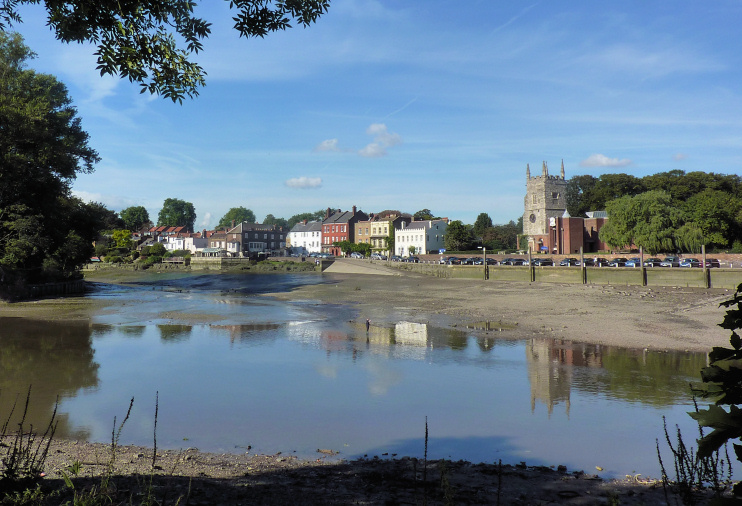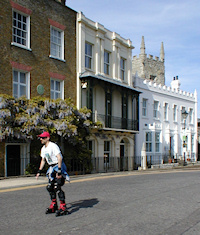Isleworth
Isleworth, Hounslow
A riverside settlement of ancient origin that was overwhelmed by suburban development after the coming of the railways

A copy of an Anglo-Saxon charter indicates that this was Gislheresuuyrth in 677 – ‘the enclosed settlement of a man called Gīslehere’. The ‘G’ wasn’t dropped from the name until the mid-13th century, by which time Isleworth had evolved into a village on a manorial estate. Following the dissolution of the monasteries the increasing private ownership of land led to the development of Isleworth as a wealthy residential area. Among the titled residents, Lord Grey of Warke was living in a house on the south side of Swan Street in 1635.
The village was solidly established by the mid-17th century but nothing remains from this period. The ‘very ancient’ church of All Saints was rebuilt in 1707. The London Apprentice public house dates from 1731 and is said to have been named after the apprentice liverymen who rowed all the way here from the City of London on their days off. Church Street and Lower Square acquired some fine stuccoed terraced houses in the 18th and early 19th centuries, and several have survived.
The arrival of the South Western Railway’s Hounslow loop line in 1849 prompted the richest residents to move farther out of London and encouraged the growth of market gardens in place of orchards. The earliest phase of suburban development took place in Spring Grove and Woodlands. The railway brought factories too, and Pears soap was made in Isleworth for a hundred years from 1862. The new residential quarter of St Margarets filled the gap between Isleworth and Twickenham at the end of the 19th century.
The Great West Road came to the north of the district in the mid-1920s, bringing semi-detached houses that joined Isleworth to Osterley. The construction of the Mogden waste water works in 1936 reduced the appeal of the south-western corner of Isleworth and locals have been protesting about the odours ever since.

All Saints’ church was badly damaged by arson during the Second World War, when enemy bombing devastated the industrial wharves. This destruction, combined with council clearances before and after the war, left large chunks of Old Isleworth desolate and it was several decades before the area was fully redeveloped. The church was rebuilt in 1970, with a modern extension tacked on.
The council and private developers built numerous blocks of flats in the second half of the 20th century and other parts of the old town have since been subject to further modernisation, especially in the late 1980s, with a complex of riverside terraces, offices and a pub. Recent gated blocks of loft-style apartments have further added to the disharmony but Old Isleworth nevertheless retains enough heritage to justify its appellation.
Odeon Parade is a conversion of Isleworth Studios (formerly the Odeon cinema) into 36 apartments. Isleworth is the home of the massively redeveloped West Middlesex University Hospital (shown in the drone photograph below) and – on the Osterley border, beyond the top of the map below – of Sky TV.

Shown in the photograph at the top of this article, Isleworth riverside is designated both a conservation area (which extends to include Syon Park) and a ‘viewpoint in all directions’, offering sights that include Isleworth Ait, Richmond Old Deer Park and Kew Observatory.
The Isleworth Mona Lisa is an alternative version of the world’s most famous work of art, discovered in Somerset c.1913 by Hugh Blaker, who bought it and took it to his studio and gallery in Church Street. The painting’s present owners call it the Earlier Mona Lisa.
Postcode area: Isleworth TW7
Population: 11,977 (2011 census)
Station: South West Trains (zone 4)
Website: The Isleworth Society
Further reading: Mary and Kevin Brown, Isleworth (Archive Photographs), The History Press, 2004
and Christine Diwell (ed.), Isleworth Remembered: Memories of Life in a Riverside London Village 1900–2003, Isleworth Society, 2003
